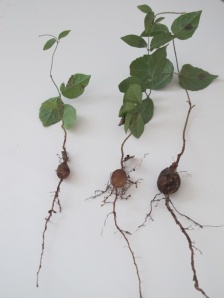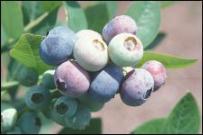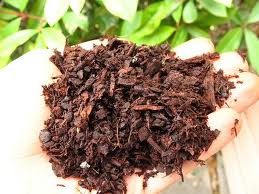It’s April, and you may start to see these “beautiful” yellow, trumpet-shaped flowers falling from the sky or branches of your trees. Although it may resemble Allamanda, it may actually be cat’s claw vine. Macfadyena unguis-cati develops strong vines that grow up trees, fences, and buildings.
Look for identifying clues, such as vines climbing to the tops of trees, woody stems, tuberous roots, terminal 3-forked tendrils that appear “claw-like,” trumpet-shaped yellow flowers, and linear, flat fruit (seed) capsule. The runners may appear to be a groundcover.
Cat’s claw vine, Macfadyena unguis-cati is a nonnative, introduced plant that has become an ecological threat, naturalizing in north Florida and Georgia. Originating in the West Indies, Mexico, and Argentina, it may be confused with our native yellow Jessamine, Gelsemium spp. The Florida Exotic Pest Plant Council categorized Cat’s claw vine as a Category I exotic invasive.
For more information on identification and control, please contact the Hillsborough County Extension Service at (813) 744-5519.
References:
UF/IFAS Center for Aquatic and Invasive Plants
http://plants.ifas.ufl.edu/node/259
Visit this website to see the UF/IFAS Assessment, download a recognition card, download a page from from Identification and Biology of Nonnative Plants in Florida’s Natural Areas – Second Edition, by K.A. Langeland, H.M. Cherry, et al. University of Florida-IFAS Pub SP 257. 2008.
BioNET-EAFRINET Keys and Fact Sheets
Macfadyena ungus-cati (Cat’s Claw Creeper)
Invasive Plants of the Eastern United States: http://www.invasive.org
Ward, D.B. 2005. Putting a stop to the cat-claw vine infestation in Gainesville. Wildland Weeds 8(3):17.
Nicole Pinson
Extension Agent – Urban Horticulture
Master Gardener Coordinator
UF/IFAS Hillsborough County Extension Service
5339 County Road 579
Seffner, FL 33584-3334
p: (813) 744-5519 X 54145
nicolepinson@ufl.edu
pinsonn@hillsboroughcounty.org
http://hillsborough.ifas.ufl.edu




















